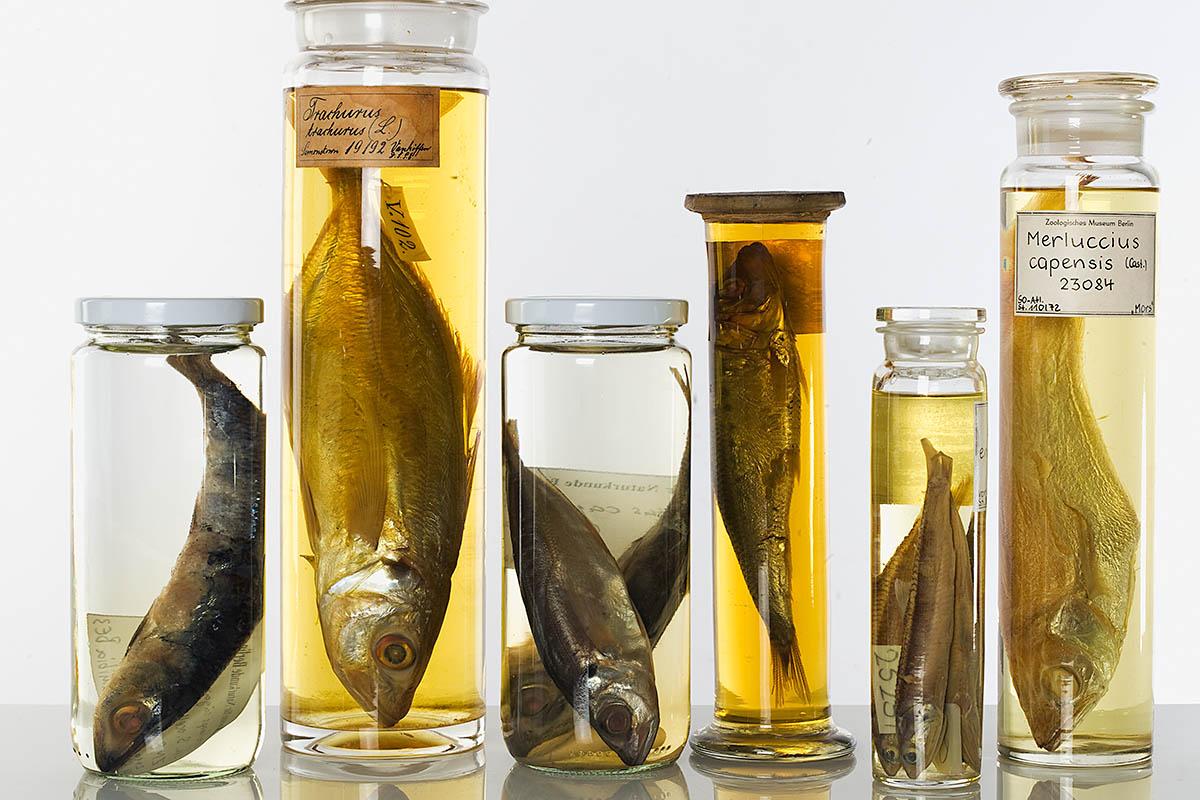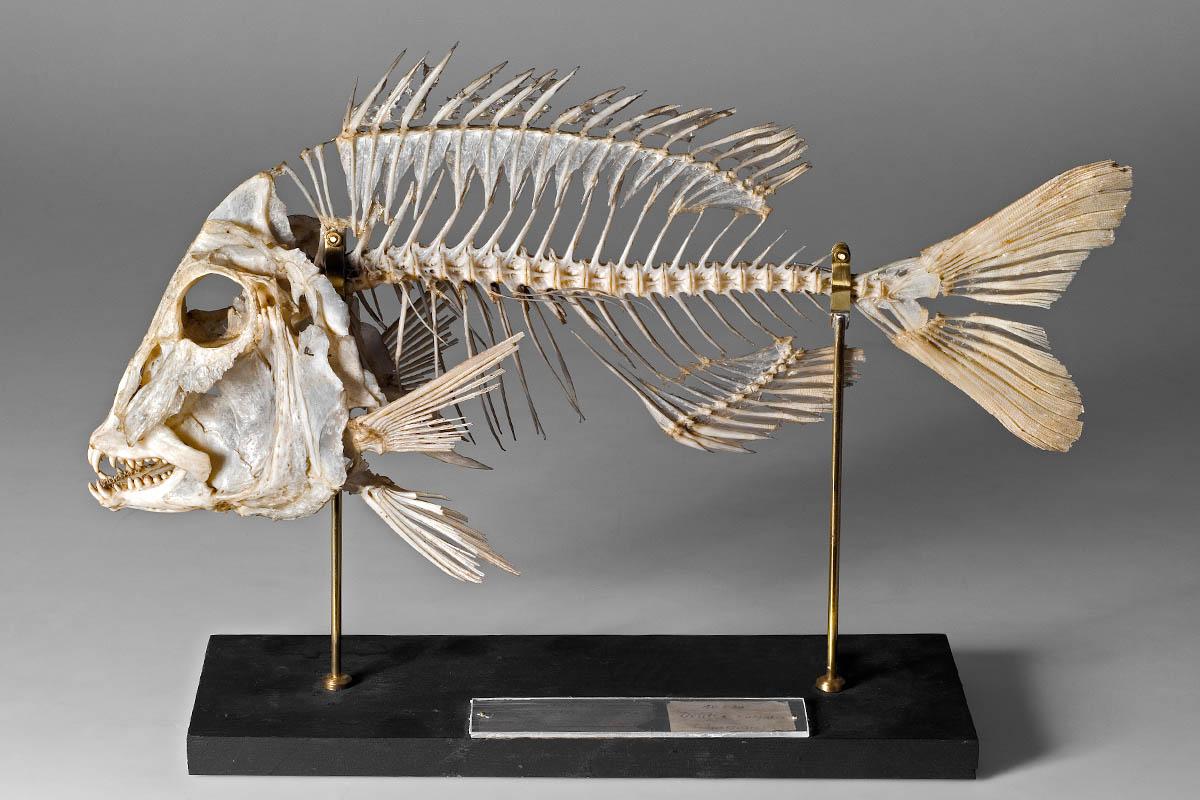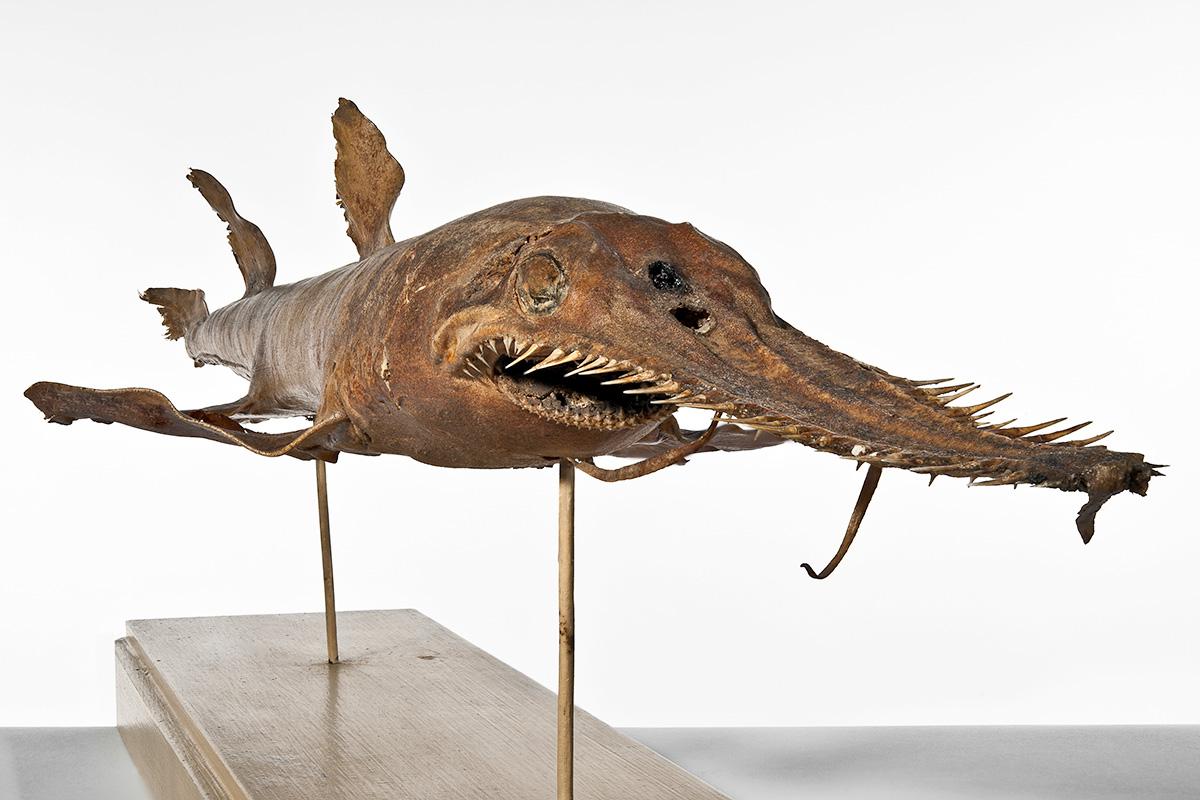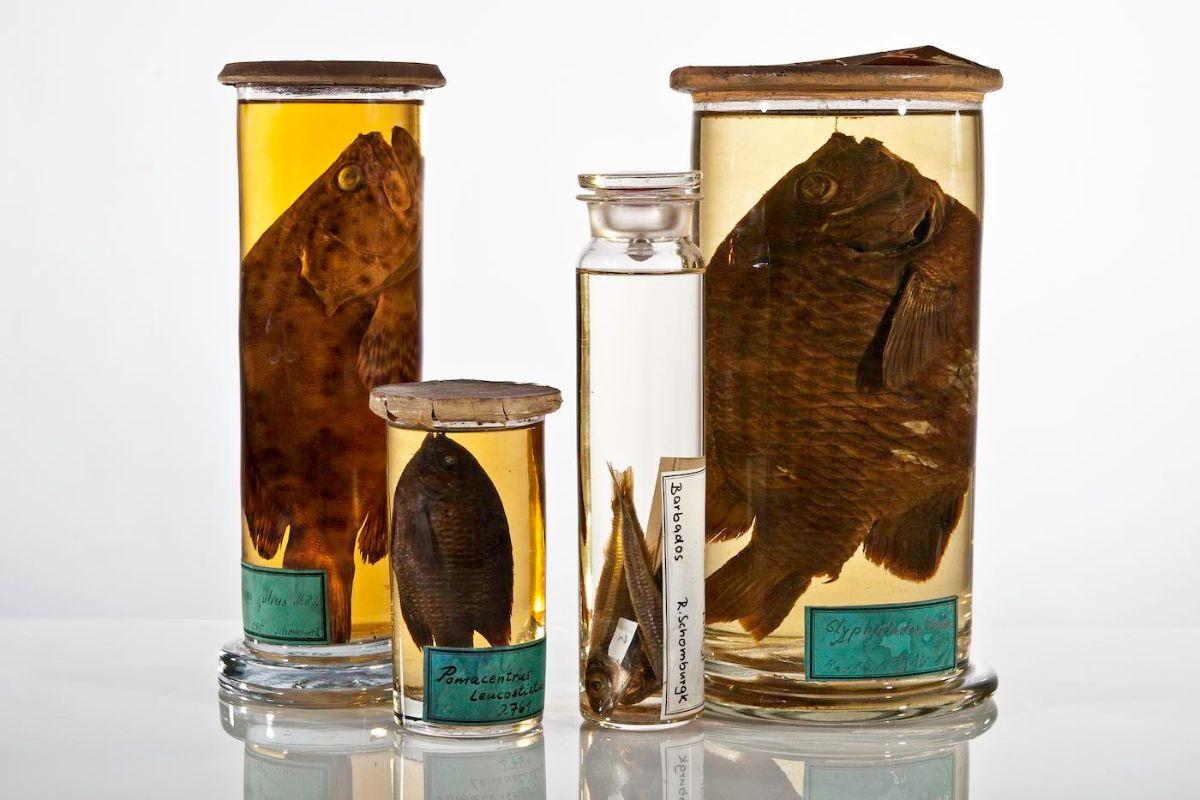Fishes (pisces) are a very heterogeneous group of vertebrates that primarily live in water. The Ichthyological Collection comprises approximately 133,490 specimens, including approximately 50 % of more than 29,000 named species. The specimens include 1,100 fish skeletons, 1,750 dry specimens and fish skins and 130,640 fish preserved in ethanol.
It is a medium-sized collection, but the abundance of historic specimens from all over the world makes it a unique collection in Germany, and it is a major international reference for taxonomic and biogeographical research.
Digitisation
Type specimens can be researched via GBIF and Eschmeyer’s Catalog of Fishes. Catfishes can be accessed on the Internet via ACSI.
An internal database with catalogue entries of collection specimens is available in the Museum, containing at least primary entry data, but increasingly also digital images and X-rays of type specimens.
History
The oldest and historically most valuable parts of the collections are the collection by Marcus E. Bloch (1723–1799) and some preserved fish specimens from Peter S. Pallas (1741-1811). Both collections were compiled in the late 18th century.
The collection also houses specimens from the Friedrich W. Hemprich (1796-1825) and Christian G. Ehrenberg (1795-1876) North African expedition of 1820-1825, many preparations from Johannes Müller’s anatomy collection. Johannes Müller (1801-1858) is considered to be the founding father of modern zoological systematics. Many fishes were caught during the Valdivia German deep sea expedition. The Valdivia expedition was the first German marine research expedition driven by a zoological-scientific interest. It yielded a plethora of insights into deep sea organisms and habitats.
More recent, comprehensive additions to the collections come – among other places – from the Institut für Hochseefischerei in what was East Germany.
Highlights
What stands out is the material that was collected in the early days of scientific research, yielding significant insights in terms of science history. The Ichthyological Collection of the Museum includes the collection of Marcus É. Bloch (1723-1799), who described and classified many fish species in the 18th century and who founded ichthyology as a special branch of zoology. In spite of the difficult times the Museum went through, most of the collection is still intact. It remains a widely used reference collection for taxonomists.
The scientifically most important pieces are the 2,500 type specimens of 1,700 species descriptions and specimens of extinct or rare species and populations. The collection contains reference specimens for works by Georges Cuvier (1769-1832) and Achille Valenciennes (1795-1865), Alexander v. Humboldt (1769-1859) and his successors who explored South America, as well as the expeditions of Hemprich and Ehrenberg to Northern Africa and Wilhelm C.H. Peters (1815-1883) to Mozambique. The original material on which J. Müller’s comparative anatomy studies in the 19th century were based is particularly relevant to systematics, evolutionary biology and the history of science.
Wet collection
Ethanol-preserved fish specimens from different periods, originating from the Benguela current, to be used in comparative stable isotope analysis. The Wet collection is represented in the exhibition of the Musuem für Naturkunde.

Dentex dentex (Linnaeus, 1758)
Restored skeleton of a Mediterranean Dentex.
ZMB 33358

Pristiophorus cirratus (Latham, 1794)
An old dry specimen of a longnose sawshark, donated by Wilhelm v. Blandowski (1822-1878), Victorian Museum Melbourne, around 1855.
ZMB 4537

Research
We are currently carrying out research on the history of science as well as zoological research on fish specimens brought back from Gottfried C. Ehrenberg‘s and Friedrich W. Hemprich‘s Northern Africa expedition between 1820 and 1825. There is also an ongoing critical review of the records and specimens of the Anatomy Collection. The curator is a specialist in the phylogeny of recent ancient fish groups and the anatomy, reproductive biology and ontogeny of osteichthyans (bony fish).
Our comprehensive research service answers queries on taxonomy, but also queries on marine organisms, marine ecology and fisheries biology. We also cooperate with conservation organisations and authorities as well as exhibitions and public relations services.
Access to our collections must be arranged in advance with the curator and/or the collection manager in charge.
Library
The Central Zoological Library of the Museum für Naturkunde has a wider-ranging stock, including expedition logs, works on zoology and journal articles, but there is a separate library on ichthyology and a reference library containing approximately 1,500 monographs and 36 metres of reprints since 1850.
